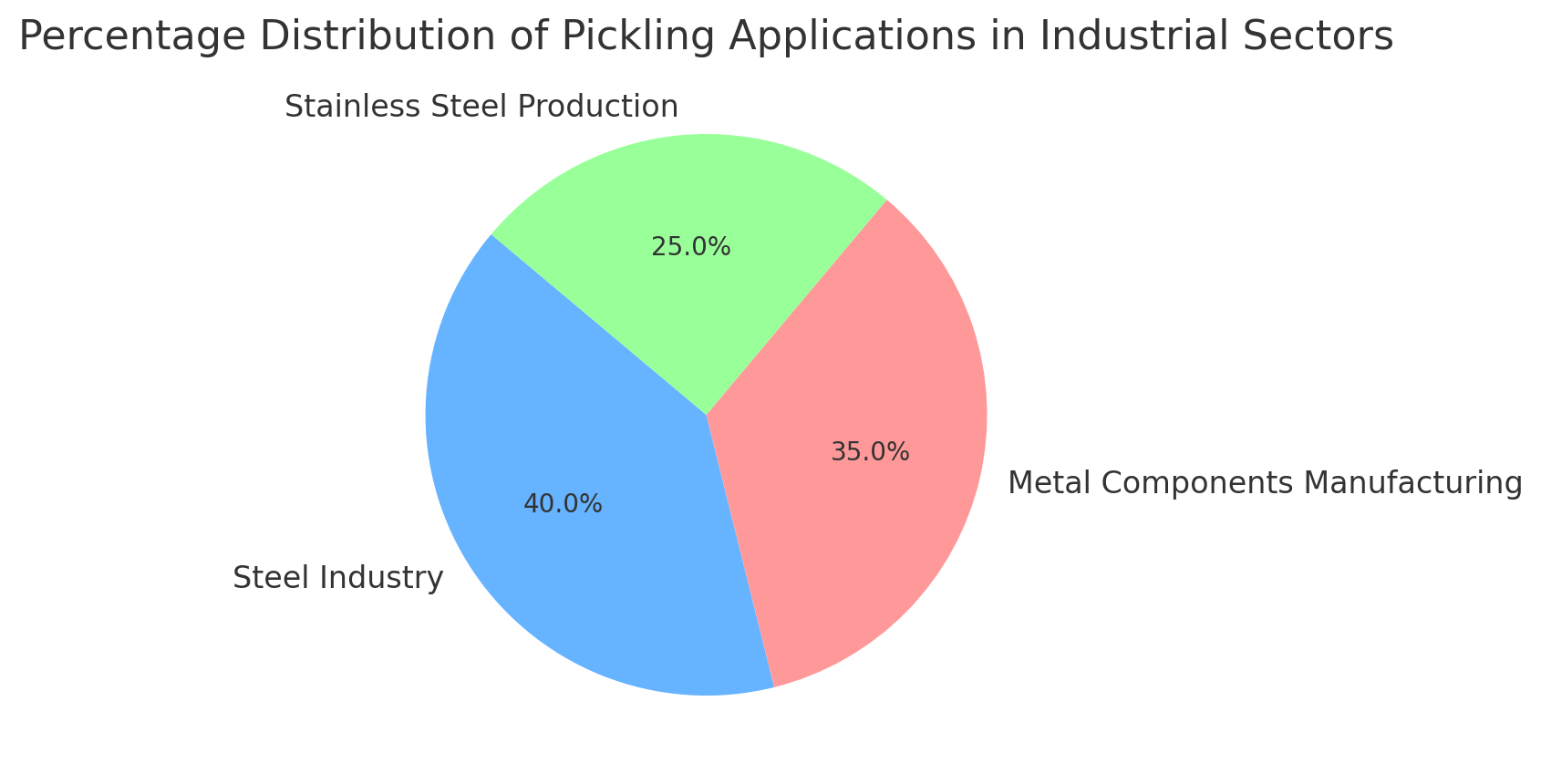Pickling: What It Is and How It Works
Introduction
Pickling is a chemical process used to remove impurities, oxides, scale, and other contaminants from the surface of metals. This treatment is essential for preparing the metal for further processing such as painting, welding, or galvanizing, ensuring a clean, defect-free surface that allows optimal adhesion of subsequent coatings. Pickling is a common practice in the steel industry, stainless steel production, and metal component manufacturing, where surface quality directly affects the performance and durability of the final product.
What Is Pickling?
Pickling is a chemical treatment that involves immersing metal in an acid or alkaline solution to remove surface oxide layers and other impurities. This process is crucial for achieving a clean and active metal surface, particularly important for ensuring adhesion of subsequent coatings and improving the metal’s mechanical and chemical properties.
Types of Pickling
There are mainly two types of pickling: acid and alkaline. Each type has specific characteristics that make it suitable for different industrial applications.
Acid Pickling
Description: Acid pickling uses strong acids such as sulfuric, hydrochloric, or nitric acid to remove oxides, scale, and other surface contaminants. It is the most common method and is mainly used for carbon steel and stainless steel.
Applications:
- Carbon steel: Removal of scale and preparation for galvanizing.
- Stainless steel: Cleaning and preparation to improve corrosion resistance.
Advantages: - Fast and effective removal of oxides.
- Suitable for heavily contaminated surfaces.
Limitations: - Requires careful treatment of acidic waste.
- Can cause overly aggressive action if not properly controlled.
Alkaline Pickling
Description: Uses alkaline solutions, often based on sodium or potassium hydroxide, to remove organic impurities such as oils, greases, and other contaminants. This type of pickling is less aggressive than acid pickling and is often used as a pretreatment.
Applications:
- Preliminary treatment before acid pickling.
- Cleaning of light alloys and metals sensitive to acids.
Advantages: - Less corrosive than acid pickling.
- Safer for treating delicate materials.
Limitations: - Less effective at removing metallic oxides.
- Slower process compared to acid pickling.
Comparative Table: Acid Pickling vs. Alkaline Pickling
| Characteristic | Acid Pickling | Alkaline Pickling |
|---|---|---|
| Type of Solution | Sulfuric, hydrochloric, nitric acid | Sodium hydroxide, potassium hydroxide |
| Removal Effectiveness | High (oxides and scale) | Moderate (oils and greases) |
| Process Speed | Fast | Slow |
| Typical Applications | Carbon steel, stainless steel | Light alloys, preliminary treatment |
| Environmental Impact | Requires careful waste management | Lower impact, but disposal still required |
Pickling Process
The pickling process involves several stages, each essential for achieving a high-quality metallic surface:
Preliminary Cleaning
Description: Before pickling, the metal is cleaned to remove surface contaminants such as oils, greases, and dust. This step is crucial to ensure the effectiveness of the chemical treatment.
Cleaning Techniques: Degreasing, high-pressure cleaning, cleaning with specific solvents.
Immersion in the Pickling Bath
Description: The metal is immersed in the pickling solution, where the chemical reaction dissolves oxides and impurities. Immersion time and bath temperature are critical parameters that must be carefully controlled.
Critical Parameters:
- Immersion Time: Generally ranges from a few minutes to several hours, depending on surface contamination.
- Temperature: Usually between 20°C and 60°C but can be adjusted depending on the type of metal.
Rinsing and Neutralization
Description: After pickling, the metal must be rinsed to remove solution residues and neutralize any remaining acidic or alkaline traces, preventing further unwanted chemical reactions.
Rinsing Techniques: Rinsing with deionized water, neutralization with alkaline or acidic solutions depending on the type of pickling.
Drying and Quality Control
Description: Finally, the metal is dried and subjected to quality checks to ensure the surface is completely clean and ready for subsequent processing such as painting, galvanizing, or welding.
Control Tools: Visual inspection, adhesion tests, measurement of removed oxide thickness.
Description: Finally, the metal is dried and subjected to quality checks to ensure the surface is completely clean and ready for subsequent processing such as painting, galvanizing, or welding.
Control Tools: Visual inspection, adhesion tests, measurement of removed oxide thickness.
Chart: Distribution of Pickling Applications
The chart below shows the percentage distribution of common pickling applications across various industrial sectors:
This chart highlights how pickling is widely used in the steel industry, metal component manufacturing, and stainless steel production, where surface cleaning and preparation are essential to ensure product quality.

Advantages and Limitations of Pickling
Advantages
Effective Impurity Removal
Description: Pickling is one of the most effective methods for removing oxides, scale, and other surface impurities, ensuring a clean and active surface for subsequent processes.
Improved Adhesion
Description: A properly pickled surface allows better adhesion of protective coatings such as paints, galvanizing, or organic coatings, improving durability and final product quality.
Versatility of Application
Description: Pickling can be applied to a wide range of metals and alloys, making it a versatile treatment adaptable to various industrial needs.
Limitations
Chemical Waste Management
Description: Pickling generates chemical waste that must be managed and disposed of safely to avoid negative environmental impacts.
Possible Surface Damage
Description: If not properly controlled, pickling can cause excessive erosion of the metal or damage to the surface, compromising the mechanical properties and aesthetic appearance of the material.
Business Conclusion
Pickling is a crucial process to ensure the quality and durability of metal components, although it requires careful management.



